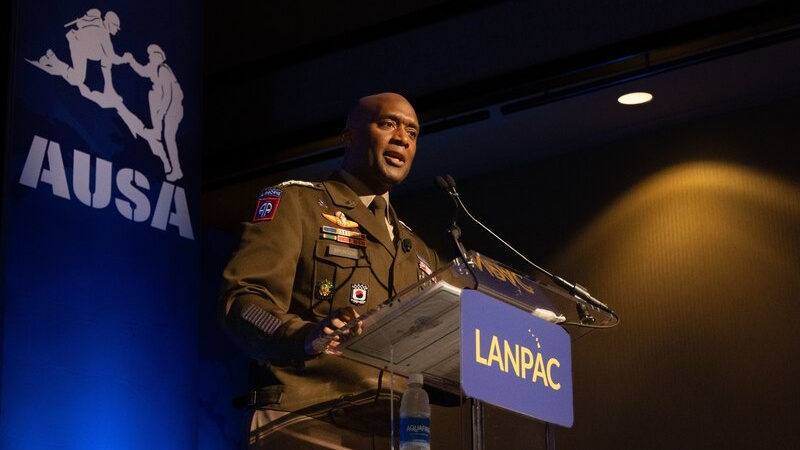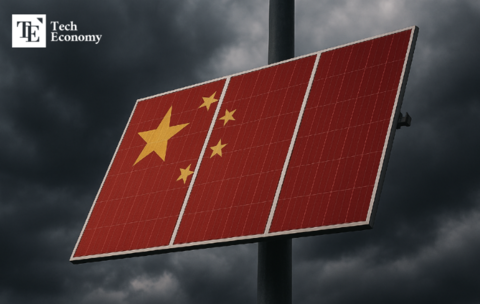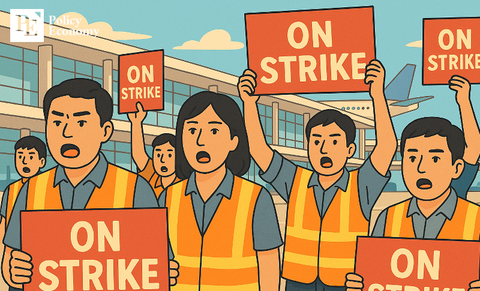Combined Forces Commander Vows to Tackle Complex Security Threats, Accelerates Strategic Realignment of U.S. Forces Korea
Input
Modified
Focus Shifts to Preserving Order in Northeast Asia and the Western Pacific
U.S. Congress Stresses Need for Permanent Force Presence
Pivotal Moment for South Korea’s Foreign and Security Policy

The commander of U.S. Forces Korea (USFK), who assumed the post late last year, has signaled a shift in the mission of American troops on the Korean Peninsula, emphasizing capability over troop numbers. While Congress has moved to block any near-term reductions by passing legislation to maintain current troop levels, Washington is accelerating efforts to pivot USFK’s primary mission from deterring North Korea to countering China. Analysts say U.S. responses to a potential Taiwan Strait crisis and the broader realignment of its Indo-Pacific strategy could fundamentally reshape the U.S.-South Korea security framework.
“Better Defense Through a Different Use of Forces”
Xavier Brunson, the USFK commander, said at his first press briefing since taking office, held August 8 at Camp Humphreys in Pyeongtaek, that he believes USFK “needs change” and that his focus is on “capabilities, not numbers.” His remarks have been interpreted as suggesting the possibility of redeploying some of the approximately 28,500 U.S. troops stationed in Korea to other theaters. He noted that the U.S. Air Force has been deploying fifth-generation fighters, including the F-35, to South Korea for the past six months, adding, “We can achieve better defense by employing our forces differently than before.”
Brunson cited the previous redeployment of Patriot missile batteries to the Middle East as an example of “strategic flexibility” — moving assets according to time, space, and necessity. “Because of the training we conducted on the Korean Peninsula, the Patriot units reached the highest readiness levels, enabling their deployment to the Middle East,” he said. “As in that case, we need to take a comprehensive view of where and how our forces are positioned and consider how they can be used to address larger challenges.”
His comments came within the context of a broader strategic framework aimed at addressing complex security threats. While describing North Korea as a “nuclear-armed adversary,” Brunson also highlighted growing threats from Russia’s increased regional involvement and China’s expanded military activity in the Yellow Sea. He drew parallels between China’s construction of facilities and expanded exercises in the Yellow Sea and its behavior in the South China Sea, stressing that the U.S.-South Korea alliance possesses the capability to monitor and target such developments.
Still, it remains unclear whether his remarks will translate into immediate troop redeployments. Brunson offered no specifics on timing or numbers for potential personnel changes and reaffirmed that the transfer of wartime operational control (OPCON) would proceed only once agreed conditions are met, warning that a premature shift could jeopardize readiness on the Peninsula. In this light, his comments are seen as an acknowledgment of a change in USFK’s mission and operational posture rather than an imminent adjustment in troop strength — a shift from a narrow focus on deterring Pyongyang to a broader mandate of countering China and maintaining regional order.
Congress Codifies USFK Troop Level Requirement
The U.S. Congress has moved to formally block any reduction in USFK troop numbers. On July 15, the House Armed Services Committee approved an amendment to the Fiscal Year 2026 National Defense Authorization Act (NDAA) stipulating that roughly 28,500 U.S. troops remain stationed in Korea. Introduced by Representative Joe Wilson, the amendment reflects the Pentagon’s ongoing efforts to strengthen alliances in the Indo-Pacific while reaffirming the U.S. commitment to maintaining troop levels and its extended deterrence pledge on the Korean Peninsula. The wording mirrors that of the FY 2025 NDAA, effectively reinforcing the status quo amid renewed debate over possible drawdowns under a future Trump administration.
Earlier, on July 11, the Senate Armed Services Committee passed a similar bill by a 26–1 vote. The Senate version bars any reduction in USFK’s posture until the Secretary of Defense certifies to Congress that such a move, or a transfer of OPCON, would be in the national interest. It also requires independent risk assessments from the Chairman of the Joint Chiefs of Staff, the Indo-Pacific Command chief, and the USFK commander before any troop reduction or OPCON transition.
These provisions act as safeguards preventing the executive branch from unilaterally cutting USFK’s size. The restriction clause was first introduced in the FY 2019 NDAA to counter concerns about a potential U.S. withdrawal during Donald Trump’s first term. It was later replaced with “maintain current levels” language starting in the FY 2022 NDAA. Its revival after three years reflects renewed fears that Trump could reduce troop numbers without congressional consultation.
In May, reports surfaced that the Pentagon was considering relocating about 4,500 USFK personnel to Guam and other Indo-Pacific locations. While both the Pentagon and USFK denied the reports, Congress responded by locking in troop levels through law, effectively eliminating any short-term possibility of reductions.

Operational Scope Broadens to the Indo-Pacific
Meanwhile, Washington is pressing ahead with plans to shift USFK’s core mission from deterring North Korea to countering China. On July 24, the State Department announced the start of talks with South Korea on “modernizing the alliance,” stating that the goal was to “recalibrate the roles and responsibilities of U.S. and South Korean forces on the Peninsula.” According to diplomatic sources, proposals have been floated through senior channels to reposition USFK as a China-focused force, expanding the operational scope of the U.S.-ROK Mutual Defense Treaty to cover the entire Indo-Pacific region.
At the heart of this debate is China’s growing military power and the rising tensions in the Taiwan Strait. In recent years, Beijing has steadily ramped up military exercises around Taiwan, heightening its displays of force. The U.S. views this as the foremost threat to regional security and order. In late March, Washington’s Interim National Defense Strategy Guidance identified deterring a Chinese invasion of Taiwan as its top priority. The upcoming National Defense Strategy (NDS), due later this month, is expected to outline force restructuring plans to that end.
The linkage between security policy and trade negotiations has also come into focus. Internal documents obtained by the Washington Post indicate that, during U.S.-Korea tariff negotiations, the Trump administration considered pressing Seoul to accept greater strategic flexibility for USFK — effectively broadening its operational reach for China deterrence. Early draft proposals reportedly included raising South Korea’s defense spending to 3.8% of GDP and increasing its defense cost-sharing contributions to nine times the current level. This approach, which sought security concessions in exchange for tariff relief, suggests that USFK’s role adjustments could emerge as a secondary agenda item in alliance modernization talks.
Experts warn that such a realignment could upend the U.S.-ROK security structure that has held for more than seven decades. If Washington uses USFK as a forward base to counter China, South Korea could find itself squarely in the middle of U.S.-China strategic rivalry. Public acceptance in South Korea is far from guaranteed, and any divergence in alliance priorities could have cascading effects on diplomacy and the broader economy. Moreover, there is a possibility that a future Trump administration could use Seoul’s participation in an anti-China coalition in the Western Pacific as a litmus test of its status as a U.S. ally. Ultimately, the reshaping of USFK’s mission could mark not only a critical moment for restoring trust between the two nations’ leaders, but also a decisive turning point for South Korea’s foreign and security policy.




















